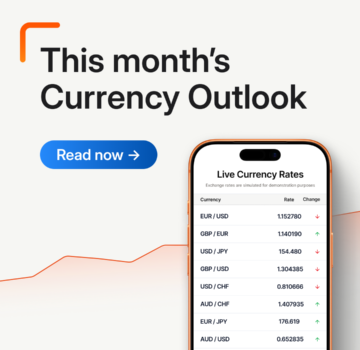Smooth international invoicing is essential for businesses operating across borders. Whether you’re dealing with global suppliers, international contractors, overseas customers, or remote employees, having a structured invoicing and payment system helps improve cash flow, cost efficiency, and regulatory compliance.
But international transactions often bring challenges. Fluctuating exchange rates, long processing times, hidden fees, and country-specific regulations make even simple payments more complex. Without the right approach, you risk delayed payments, compliance issues, and financial losses.
This article explores how SMEs can effectively manage international invoice payments, reduce risks, and ensure smooth global transactions.
Looking for a better way to control your business spend?
Why international payment systems matter
International payment systems are the backbone of global transactions. They let businesses and financial institutions transfer money securely and efficiently across borders. These systems facilitate the movement of funds even where this involves multiple currencies and jurisdictions.
Choosing the right system depends on factors such as currency, region, transaction value, and processing speed requirements. By understanding how these international payment systems work, you can optimise global transactions, minimize costs, and improve efficiency when dealing with cross-border payments.
How international invoicing differs from domestic payments
At their core, both international and domestic payments serve the same function — transferring funds from one entity to another. But paying across borders introduces challenges that businesses must account for to avoid delays, unnecessary expenses, and compliance issues.
Whether paying or receiving international funds, be mindful of the following issues.

1. Currency exchange & FX risk
Unlike domestic payments, international transactions often require currency conversion. This exposes your business to foreign exchange (FX) risk, where exchange rate fluctuations can increase costs between the time an invoice is issued and when the payment is processed. In other words, what you budgeted for may not be what you actually pay in the end.
There are a few currency hedging strategies that can help you manage risk, without being overly complicated or technical:
- Forward contracts – Lock in a favourable exchange rate now for future transactions.
- Limit orders – Set payments to automatically execute when favourable rates arrive.
- Multi-currency accounts – Hold funds in different currencies to avoid converting, thus eliminating FX risk altogether.
Foreign exchange fees and fluctuating rates are the kinds of hidden future costs most SMEs don’t think about. A bit of foresight and smart planning can save significant money.
2. Regulatory compliance & documentation
Each country has its own banking and financial regulations, which can make cross-border transactions complex. Your payments must comply with both the sender’s and recipient’s country regulations, including tax laws, anti-money laundering (AML) policies, and industry-specific compliance requirements.
As a basic rule of thumb, ensure all international invoices contain:
- Tax Identification Numbers (VAT, GST, EIN, etc.) as required
- Mandatory legal disclosures specific to each country
- Correct invoice formatting to meet local standards
It’s always advissable to work with legal or accounting professionals familiar with international trade regulations. Particularly as the volume and value of your international invoices increases.
3. Processing time & payment delays
Domestic payments are typically processed quickly, often within the same day or next business day. But international payments can take up to a week, with multiple banking systems, time zone differences, and intermediary banks.
The only real way to overcome these delays is to choose more dynamic payment networks where possible. Good options include:
- SWIFT payments – Secure and widely accepted for international transfers.
- SEPA transfers – Faster transactions within the EU for euro payments.
- Local clearing networks – Using domestic banking systems (e.g., Lynx in Canada, ACH in the US, FPS in the UK, NPP in Australia) to settle payments faster.
We’ll look more closely at these and other global networks shortly.
4. Higher transaction costs & hidden fees
If you’ve made international invoice payments before, you’ll know that they often come with higher fees. These additional costs are due to:
- Currency conversion charges
- Wire transfer fees
- Intermediary bank fees
- Receiving bank charges
The more you optimise and reduce any or all of these costs, the more profitable your global business becomes. Compare different payment providers to find the most cost-effective solution, with a particular emphasis on:
- Competitive exchange rates that minimize losses on conversions
- Low or transparent transfer fees to reduce unnecessary expenses
- Batch payment options to consolidate invoices and save costs
These costs can quickly add up, eating into profit margins — especially for businesses making frequent international payments.
5. Increased risk factors (fraud, sanctions & geopolitical uncertainty)
Cross-border payments introduce additional risks, including:
- Geopolitical instability that may impact banking systems
- Compliance with sanctions and embargoes in certain regions
- Higher vulnerability to fraud and cyber threats
That’s not a reason to shy away completely. But it’s a reason to be more cautious with international payments than you might be domestically. You’re also never sure how much support or legal help you’ll get overseas in the event that something goes wrong.
6. Lack of financial visibility
Both domestic and international invoicing creates efficiency and control challenges for SMEs. Without a centralised invoicing and payment system such as accounts payable automation software, you’ll struggle to track outstanding invoices, monitor payments, and reconcile accounts.
Use cloud-based financial tools to:
- Monitor invoice statuses in real time
- Track multi-currency transactions and account balances
- Generate automated reports for better financial planning
Poor international invoice management can lead to missed payment deadlines, exchange rate losses, and strained business relationships. Having a structured approach is key to ensuring operational efficiency.
Now, as promised, let’s take a closer look at the most common and important global payment systems. Choosing when and how to use these can have a huge impact on how cost-effective your global payments processes are.
International payment systems: How funds move across borders
These payment networks are essential for businesses and financial institutions operating globally, ensuring that funds can move quickly, securely, and in compliance with local regulations.
Below are some of the most widely used international payment systems, and their key functions.

1. SWIFT (Society for Worldwide Interbank Financial Telecommunication)
SWIFT is a globally recognized network that connects over 11,000 financial institutions across more than 200 countries. It doesn’t process payments itself, but serves as a secure messaging system for banks to send and receive payment instructions.
SWIFT plays a crucial role in international wire transfers, securities transactions, and letters of credit.
2. SEPA (Single Euro Payments Area)
SEPA simplifies cross-border payments within Europe, making transactions between EU countries as easy as domestic transfers. This system allows businesses and individuals to send and receive credit transfers, direct debits, and card payments under a standardized set of rules.
In many cases, SEPA transactions are now near-instant.
3. Fedwire (Federal Reserve Wire Network)
Fedwire is a real-time gross settlement (RTGS) system operated by the U.S. Federal Reserve. It facilitates high-value and time-sensitive transactions, allowing financial institutions to process payments in U.S. dollars efficiently.
4. CHAPS (Clearing House Automated Payment System)
CHAPS is a same-day, high-value payment system in the UK, used primarily for business transactions and large financial settlements. While it mainly processes domestic payments, it also supports international transfers in sterling and euros.
5. TARGET2 (Trans-European Automated Real-time Gross Settlement Express Transfer System)
TARGET2 is the eurozone’s RTGS system, handling large-value euro transactions between European banks. It ensures rapid and secure settlements, making it a key infrastructure for financial institutions operating in the EU.
6. CLS (Continuous Linked Settlement)
CLS is a specialized global system designed to reduce foreign exchange settlement risk. It synchronises both sides of a foreign exchange (FX) transaction, ensuring payments are settled simultaneously in multiple currencies.
7. CIPS (China International Payment System)
CIPS was launched by the People’s Bank of China to facilitate cross-border transactions in Chinese Renminbi (RMB). It aims to streamline RMB internationalization by providing an efficient, standardised clearing and settlement system for global transactions involving Chinese businesses.
Best practices for managing international invoices
Managing international payments can be challenging. You need to ensure transactions are secure, compliant, and efficient, no matter where or how you send money.
Here are some best practices to improve your invoicing processes.

- 1. Use a multi-currency business account
One of the most effective ways to streamline global payments is to use a multi-currency business account. Holding multiple currencies eliminates the need for frequent conversions, minimising foreign exchange losses.
This lets you receive payments in different currencies without forced conversions, pay international suppliers in their local currency for better rates, and reduce bank fees associated with currency exchanges.
For example, a UK business working with an American supplier can hold USD in a multi-currency account. You pay invoices directly from that USD stockpile, avoiding costly GBP-to-USD conversion fees.
This isn’t actually about currency trading – buying and selling currencies as an asset. It’s simply a smart way to avoid unnecessary FX fees.
- 2. Automate invoice processing & payments
Automation is another key factor in improving efficiency when processing invoices and payments. Manually handling invoices leads to errors, slow processing times, and painful delays.
AI-powered AP Automation tools let you eliminate manual data entry, automate payment reconciliation, and set up recurring transactions for suppliers or contractors.
A company paying overseas freelancers, for instance, can schedule automated monthly payments, ensuring consistency and reducing administrative workload.
And you can even set automatic rules to pay suppliers early when currency rates are optimum. Just another smart way to conduct international business dealings.
- 3. Optimise FX strategies to reduce costs
Foreign exchange fluctuations can significantly impact costs, making it crucial for businesses to optimisze FX strategies. By using forward contracts, you can lock in exchange rates for future transactions, helping to protect against unfavorable market shifts.
For example, if your European company needs to pay USD invoices in three months, you can secure today’s exchange rate, even though the transaction won’t happen until later. This safeguards you from currency fluctuations, and ensures that the price when you made the deal is the price you actually pay
- 4. Improve invoice compliance & documentation
Ensuring compliance with international invoicing regulations is critical to avoiding legal issues and penalties. Always verify that invoices include all necessary details, such as tax IDs, payment terms, and clear descriptions of goods or services provided.
Additionally, local regulatory requirements for each country must be met, and proper records should be securely stored for audits.
Again, the best tool here is automation. Implement an e-invoicing system to ensure that all financial documents are stored digitally, making them easily accessible when needed.
- 5. Gain real-time visibility over payments
Finally, you need real-time visibility into payments to track outstanding invoices and forecast cash flow accurately. A central payment dashboard provides full transparency over transactions, while live notifications alert you of pending and completed payments.
AI-driven analytics can further help finance teams identify trends and optimise payment cycles. Modern tools can identify and share odd spending patterns or opportunities to improve your processes, without you doing the difficult detective work.
With these strategies in place, you enhance efficiency, reduce costs, and maintain better control over your international invoicing processes.
- Get smart about international invoicing
Managing international invoices effectively is essential to grow and expand globally. By implementing smart FX strategies, automation, and multi-currency accounts, you can:
- Save on unnecessary FX conversion fees
- Improve cash flow through faster payments
- Enhance compliance and financial transparency
- Ensure smooth global operations with minimal risks
Ready to optimise your international invoice process? OFX has more than 25 years’ experience in global money management, and the tools available for growing businesses. Start streamlining payments, tracking FX rates, and automating key financial workflows today.
Learn how OFX can help
This article is purely for informational purposes only and should not be treated as advice. OFX will not be held liable for any losses incurred as a result of individuals or businesses relying on the information contained in this article
IMPORTANT: The contents of this blog do not constitute financial advice and are provided for general information purposes only without taking into account the investment objectives, financial situation and particular needs of any particular person. UKForex Limited (trading as “OFX”) and its affiliates make no recommendation as to the merits of any financial strategy or product referred to in the blog. OFX makes no warranty, express or implied, concerning the suitability, completeness, quality or exactness of the information and models provided in this blog.



